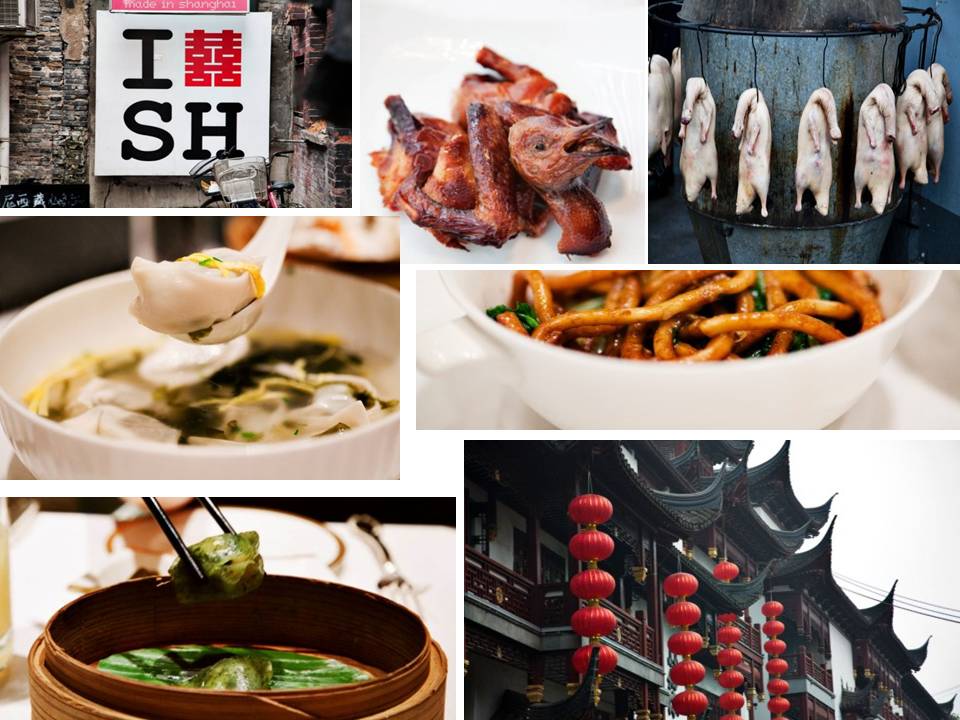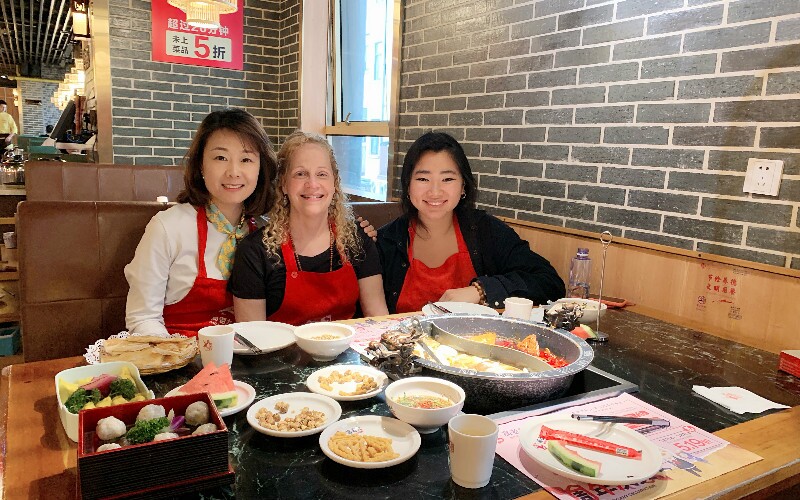20 Great Ideas To Discover China Culinary Delights
20 Great Ideas To Discover China Culinary Delights
Blog Article
Top 10 Shopping Tips For Regional Chinese Specialties China
1. Research Before you GoTip - Find out what each region is known for. Suzhou for instance, is renowned for its silk, Jingdezhen is famous for its porcelain and Tibet for its thangkas.Pro: You can focus your energy on shopping, and you'll save time.Cons: It is a process that requires preparation and familiarity with local landmarks.
2. Buy locally to ensure authenticityTo ensure authenticity and high-quality Buy items directly from the source point.Pro: Reduces the chance of copyright goods and helps local artisans.Cons: You may need to travel through less-visited areas or rural areas.
3. Go to an artist's studio or visit an art gallerySelect small-scale workshops or hubs for artisanal over general stores.Pro: Provides better understanding of craft and guarantees that you're buying directly from creators.Contra: Handmade items can be more expensive and difficult to negotiate on.
4. The cultural significance of languageTips: Find out the historical history behind items like jade carvings, cloisonne or scrolls of calligraphy.Pros: You'll be able to enjoy your purchases more and give them an even deeper significance.Pro: Takes time to fully appreciate the cultural nuances.
5. Verify the QualityTips: Check the workmanship of items such as embroidery, tea or ceramics to be sure they meet your standards.Pro You receive what you paid for.Cons: You'll need advice or knowledge to determine what is a high-quality product.
6. Beware the mass-produced goodsIt is important to look for products that are original and handcrafted rather than replicas that are mass-produced.Pro: You get to bring home an exclusive and valuable keepsake.Con True craftsmanship is likely to cost more and are harder to find.
7. Compare PricesTips: Visit several stores or stalls to compare prices on the same specialty item.Pro: Helps you establish reasonable price ranges and also helps you avoid being overcharged.Cons: Time-consuming, particularly in large markets.
8. Teas from trusted suppliersTip To visit regions such as Hangzhou or Fujian, visit trusted tea shops for Longjing (Dragon Well) or Tieguanyin teas.Pro: Ensures top quality and authenticity.Con: The cost of teas that are high-quality can be expensive for those who are new to the country.
9. Learn about Local CustomsSome sellers expect you to negotiate or make it part of the shopping experience.Shopping with a cultural twist is a fantastic method to have fun.Con: A lack of understanding of rules can lead to awkward interactions.
10. Pack WiselyBe prepared for the transportation of delicate and heavy items such as ceramics, silk or other regional specialty items.Pro: Prevents damage and ensures your purchases are delivered in a safe manner.Con: Additional logistical problems and shipping cost.
Benefits of Shopping for Regional SpecialtiesSpecialty Souvenirs that are Unique - Local specialty foods are unique and cannot be found anywhere else.Cultural Immersion. Shopping for local products will connect you to the region's heritage and workmanship.Direct purchases from artisans help local economies.The cons of shopping regional specialtiesAuthenticity concerns include the risk of purchasing counterfeits, or versions that are lower in quality.Transporting heavy or fragile items can be challenging.Locally-sourced products, especially those made by hand, can be costly.These tips will allow you to make memorable purchases during your visit to China. View the most popular journey through China food culture for site tips including China food heritage revealed, China famous food destinations, discover China regional dishes, taste your way through China, food guide to China best cities, explore China riCh food history, culinary tours of China best cities, tasty delights from China, explore diverse Chinese dishes, discover hidden food gems in China and more.
Top 10 Tips To Make Seasonal Visits To Famous Temples In China
1. Visit during Off-Season(Autumn/Winter).Tip. Consider visiting Chinese temples that are famous when the weather is cool (usually between November and February). This is the time when there are less tourists and the weather is cooler.
Pro: It is less busy. Offers a peaceful and serene atmosphere.Cons: It could be more cold and uncomfortable visiting temples in the cold.2. Be Prepared For Weather ExtremesTip - Temperatures can change drastically in the different seasons. Winters may be bitterly cold, but summers are often scorching. Pack accordingly.
Pros: Your stay is going to be enjoyable and relaxing because you'll be ready to face any weather.Con The challenge of packing for extremes of seasonal weather can be a challenge, especially if your travel is light.3. Spring and Summer Visits for Vibrant FloraVisit temples during spring or summer to view stunning gardens and flowers in bloom. Also, you can be awed by the lush scenery surrounding the temples.
Visit the grounds of the temple to take in the breathtaking surroundings.Con The summer months in the United States are often extremely hot and packed. This is especially true on the national holidays.4. Consider Festivals and Special EventsMake sure to visit during traditional celebrations like Chinese New Year or Mid-Autumn Festival. These special times permit you to participate in the rituals, celebrations and experience the vibrant culture of the temple.
Pro: Temples frequently hold lively traditional events and provide an unforgettable, unique experiences.Con: Temples are extremely crowded. Also, accommodation costs can increase during festivals.5. Avoid Peak Holiday SeasonsAvoid visiting temples at the peak tourist season (e.g. Chinese Year of the Pig, Golden Week October) as they may be overcrowded.
Pro: Peaceful visits, without crowds. Provides a spiritual experience.Cons: Some special events could be skipped during busy times.6. Be aware of Temple Closures in the winter months.Tips: Some temples might be closed or restricted in hours in winter, especially those located in remote areas or the northern regions. Make sure you check prior to visiting.
Cons: You will not waste time and can plan your other events.Con: You could be disappointed if some temples are closed for a period of time or are completely closed for renovations.7. Early Morning Visits in SummerBe sure to arrive early in the day to avoid the scorching heat of midday. Many temples will be open from dawn. It is a quiet period with fewer visitors.
Cons Pros: The crowds aren't as loud and the temperature is cooler.Con: It might not be for everyone.8. Be prepared for rain in the summer.It can be very rainy in summer, particularly in the southern part of China. If you are visiting during this time, bring an umbrella or rain gear.
You can still appreciate the beauty of the temple even when it rains.Con: Rain may interfere with outdoor activities, and can make temples slippery.9. The best time of the year is in autumn to visit temples in the mountainsThe fall foliage provides a stunning view and is the perfect time to go to the mountains (e.g. Mount Wutai).
Pros The cooler temperatures allow hiking and outdoor exploration more comfortable. The stunning views.Con: Popular mountain temples are still popular with tourists, especially during weekends or holidays.10. Consider the Lunar Calendar when planning specific activitiesTips Many temples, particularly in China, follow the lunar calendar. This means that some ceremonies and events have a lunar date. Study the calendar in order to attend important events such as the Lantern Festival, Buddha's Birthday, or other temple ceremonies.
Pros: Discover unique rituals and practices of the culture, as well as gain greater insights into local spiritual traditions.Cons: The lunar calendar may cause you to have to plan your trip more carefully and may not match up with the events that are happening at the time.Benefits of Visiting Chinese Temples SeasonallyLess crowds. Off-season travel is peace and tranquil experience.Festivals are an excellent way to immerse yourself in the cultural and religious traditions of your region.Scenic Beauty: The season of spring or autumn is the best time to go for breathtaking landscapes, lush gardens and temples.Cooler weather The autumn and winter are the best times to visit temples.Pros and cons of visiting Chinese temples in the Chinese festivalUncertain Weather: Winter may be cold and summer may be hot, which could impact your comfort.Temple Closures Some temples may be closed or have limited opening hours during the extreme weather conditions or during the season when it is not in use.At popular events can attract large numbers of people, making it difficult for you to fully appreciate the temple’s peaceful environment.Limited Events: If you're traveling outside of the time of the year, certain special events during the season may not be scheduled.When you select the appropriate time for your trip and planning accordingly, you can guarantee a more pleasant and meaningful experience at the famous temples of China. Understanding seasonal dynamics is key in maximizing the enjoyment of any trip. View the best savor China regional food specialties for blog recommendations including China famous food destinations, taste the best dishes across China, savoring the best of Chinese cuisine, the best food destinations in China, Chinese food you must try, a taste of China best local foods, Chinese cuisine you need to try, taste the best dishes across China, a culinary journey through China, uncover China food traditions and more.